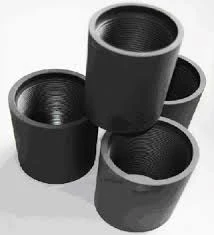Tubing Pup Joint - High-Quality Oil & Gas Accessories
Understanding Tubing Pup Joints An Essential Component in Oil and Gas Operations
In the oil and gas industry, various components are critical to ensuring efficient operation and safety in both drilling and production processes. One such component is the tubing pup joint. Tubing pup joints play a vital role in connecting different sections of tubing and are essential for maintaining the integrity of the wellbore.
A tubing pup joint is essentially a short length of tubular (usually made of steel), designed to be used in conjunction with standard tubing strings. Typically, these joints are available in various lengths, starting from as short as 2 feet to as long as several feet, and they may also have different dimensions depending on the specific tubing size with which they will be used. These joints facilitate the customization of tubular installations, allowing operators to adjust the length and configuration of the tubing string as needed.
One of the primary functions of a pup joint is to connect sections of standard tubing
. In situations where the standard lengths of tubing do not fit perfectly due to depth or other operational requirements, tubing pup joints provide a solution. They allow engineers and operators to assemble a tubing string that precisely meets the well’s depth and other logistical considerations without the need for expensive custom-manufactured sections of tubing.tubing pup joint

Moreover, pup joints can also be vital during maintenance or repair operations. For instance, if there is a need to replace a section of tubing due to wear or damage, inserting a pup joint can minimize the amount of tubing that needs to be pulled from the well. This not only saves time but also reduces the costs associated with rig operations and the handling of large lengths of tubing.
In terms of material and design, tubing pup joints are typically manufactured from carbon steel, which provides the necessary strength to withstand the pressures encountered during drilling and production. High-quality pup joints are also subjected to stringent testing to ensure they meet industry standards for safety and performance. This quality assurance is critical, as any failure of a pup joint could lead to severe operational setbacks, including blowouts or contamination of the well, resulting in a loss of both time and resources.
Another important consideration when utilizing tubing pup joints is the compatibility with various completion strategies. When dealing with different types of completion, such as open-hole, cased-hole, or horizontal wells, the proper selection and configuration of tubing and pup joints can significantly affect production efficiency and overall well performance.
In summary, tubing pup joints are a crucial component in the oil and gas industry, facilitating the connection of standard tubing in a flexible and efficient manner. They provide solutions that enhance operational efficiency, enable cost-effective maintenance, and ensure the overall integrity of the well. As the industry continues to evolve, the importance of such components will remain, underscoring the need for high-quality materials and adherence to stringent safety protocols to mitigate risks associated with well operations. Understanding and effectively utilizing tubing pup joints is essential for anyone involved in the design and execution of drilling and production programs.
-
Unlock the Benefits of Pup Joints for Your OperationsNewsOct.31,2024
-
The Quality of Casing Couplings from ChinaNewsOct.31,2024
-
The Essential Role of Pup Joints in Drilling OperationsNewsOct.31,2024
-
The Benefits of Tubing Couplings for Your ProjectsNewsOct.31,2024
-
Enhance Your Drilling Operations with Tubing Pup JointsNewsOct.31,2024
-
Elevate Your Drilling Operations with Tubing CrossoversNewsOct.31,2024







